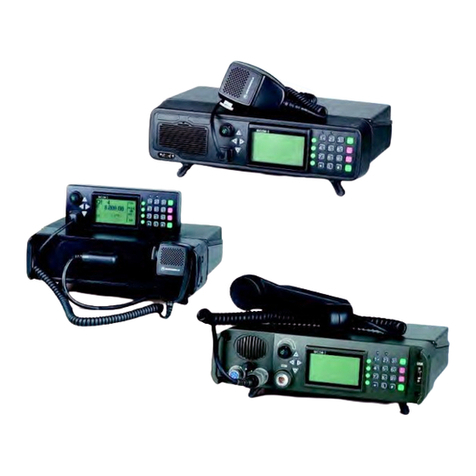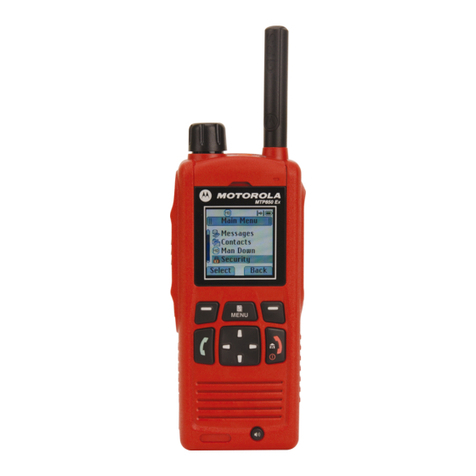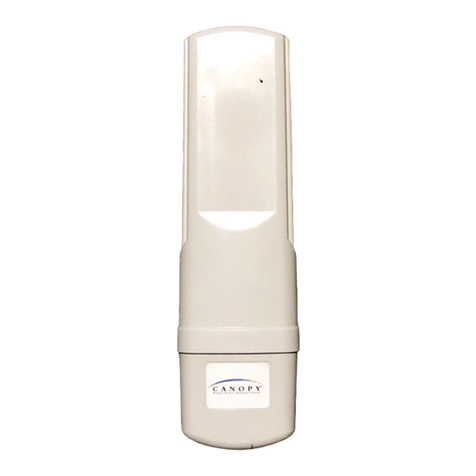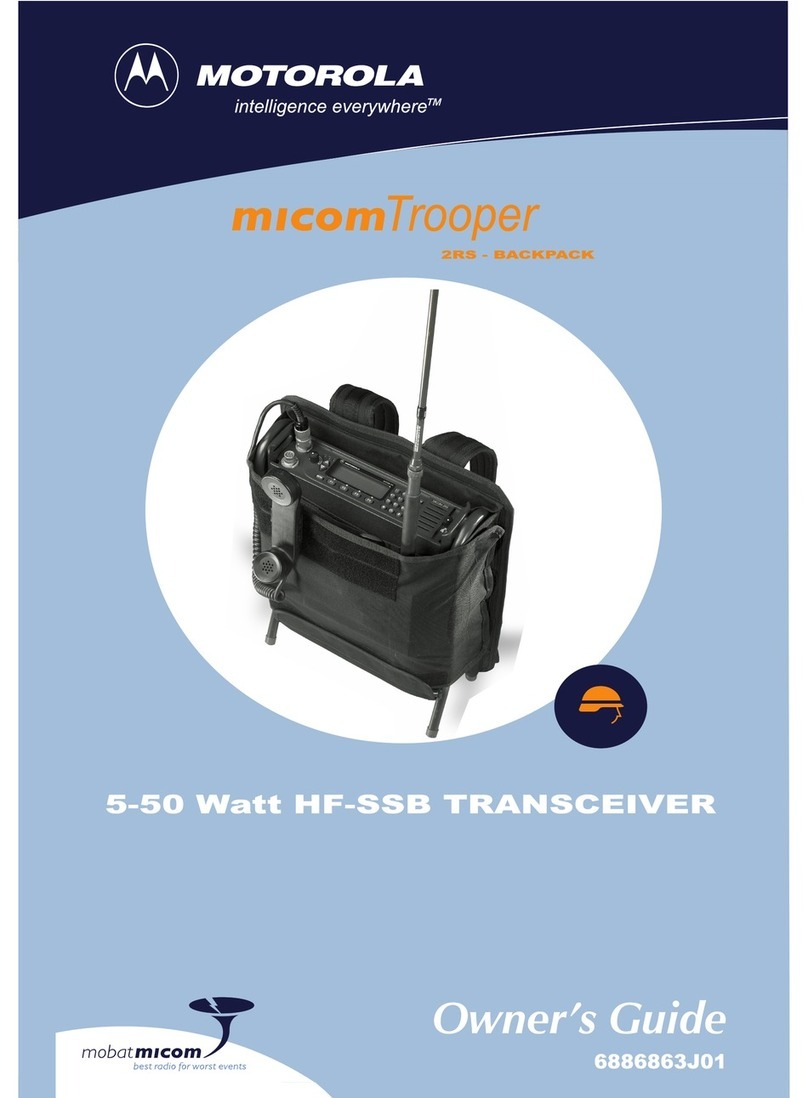Motorola APX 8000XE Use and care manual
Other Motorola Transceiver manuals

Motorola
Motorola DC800 User manual
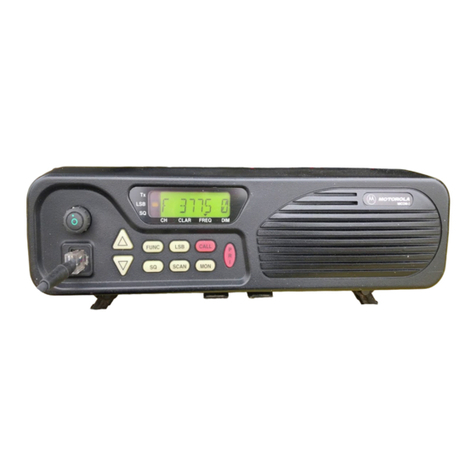
Motorola
Motorola Micom-2 User manual
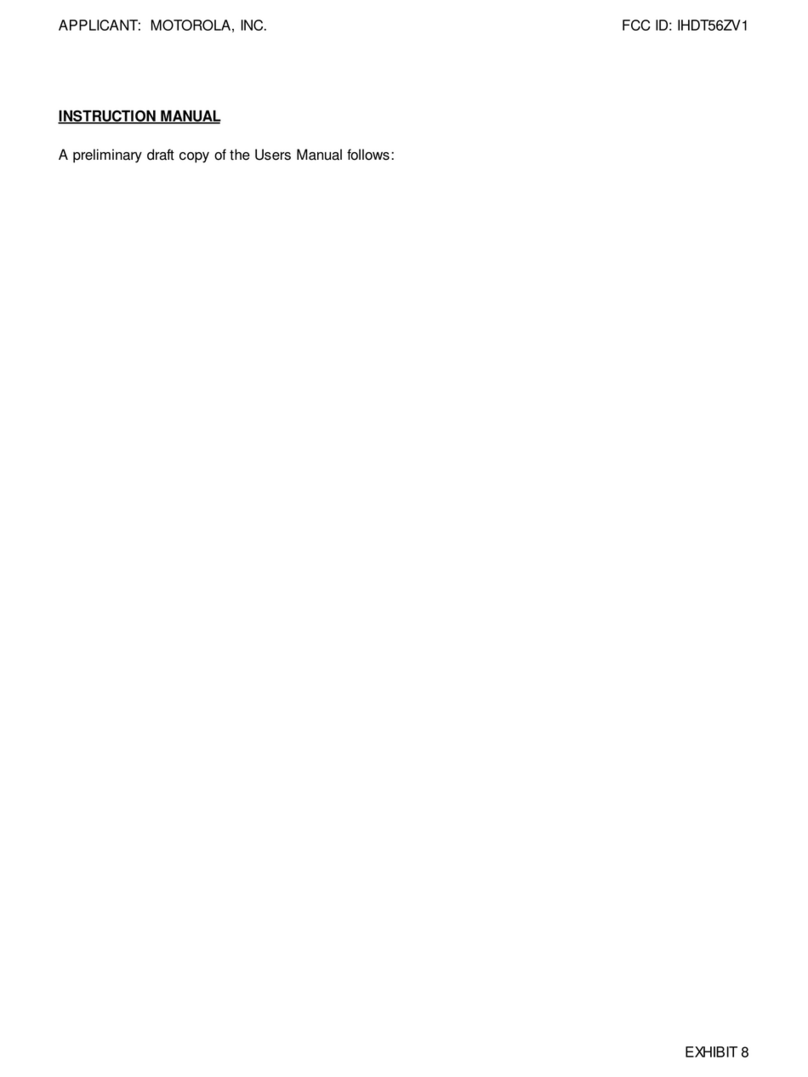
Motorola
Motorola T56ZV1 User manual
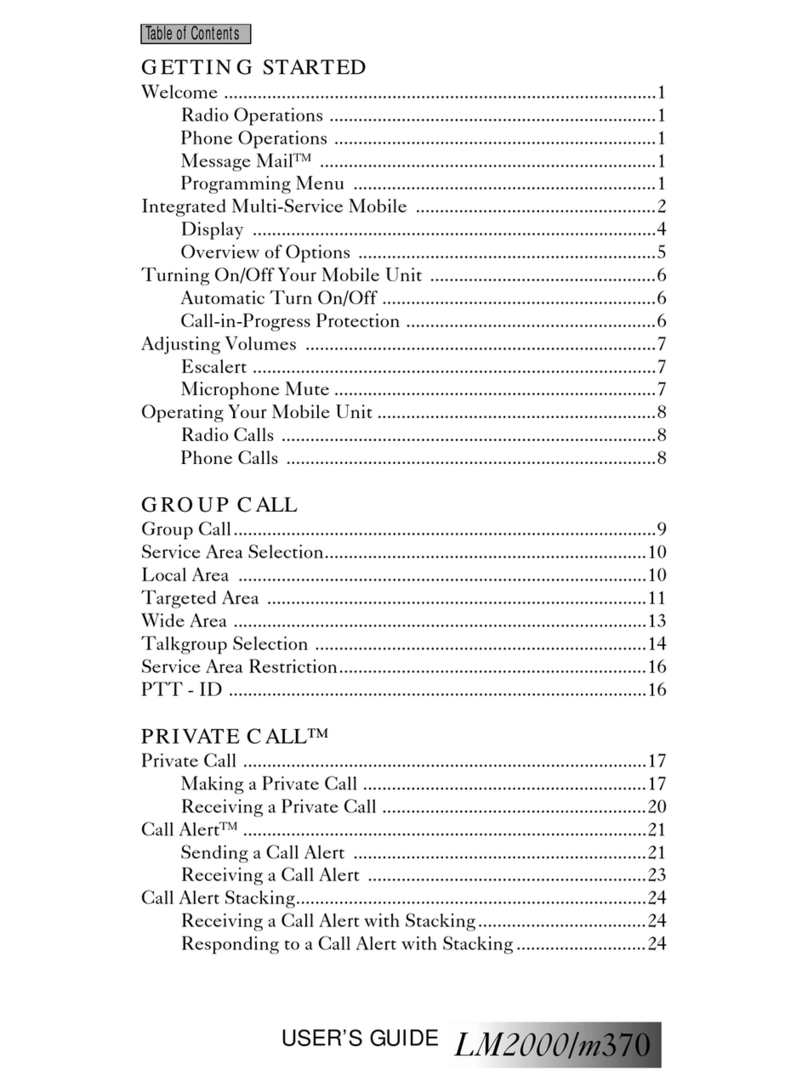
Motorola
Motorola LM2000 - SOUTHERNLINC User manual
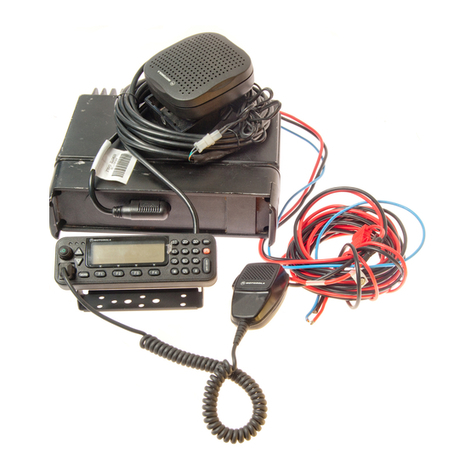
Motorola
Motorola MICOM-2E ALE User manual
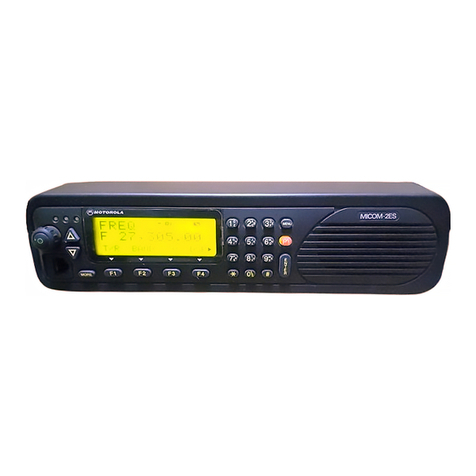
Motorola
Motorola MICOM-2ES User manual
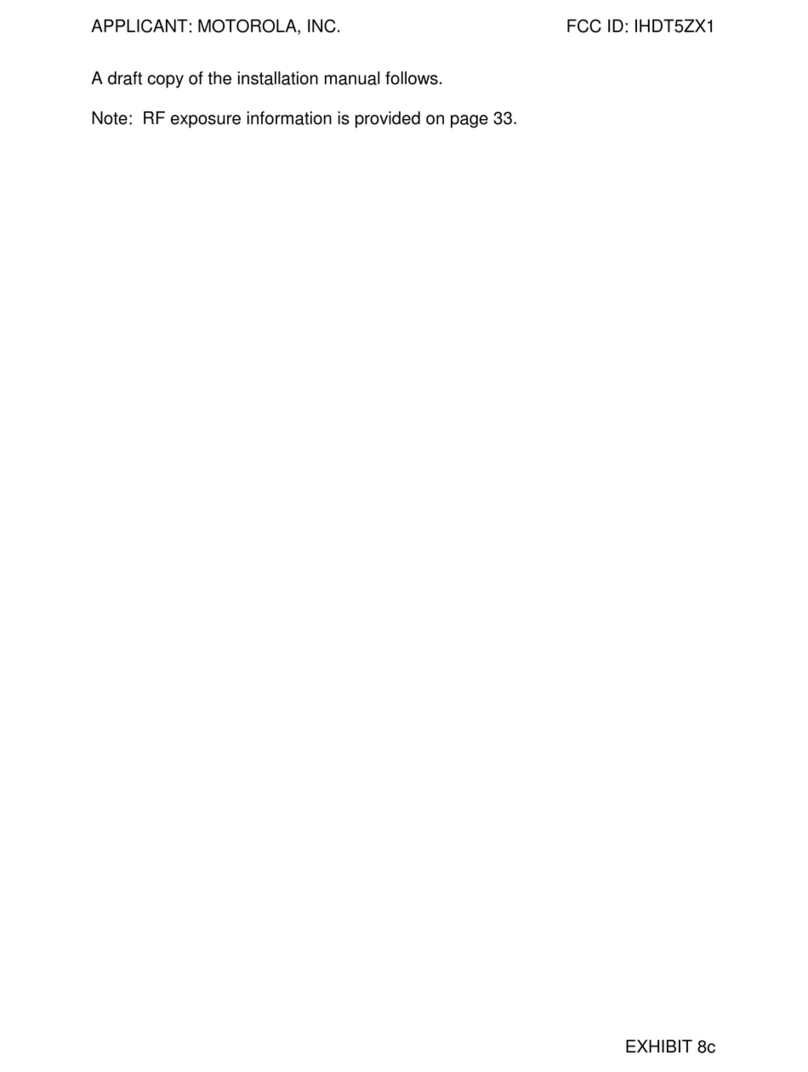
Motorola
Motorola T5ZX1 User manual
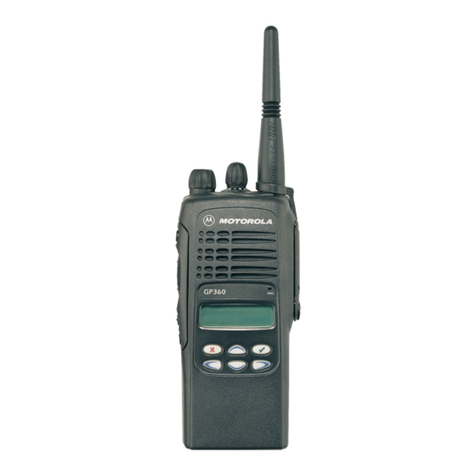
Motorola
Motorola GP360 Series User manual

Motorola
Motorola SC 300 User manual
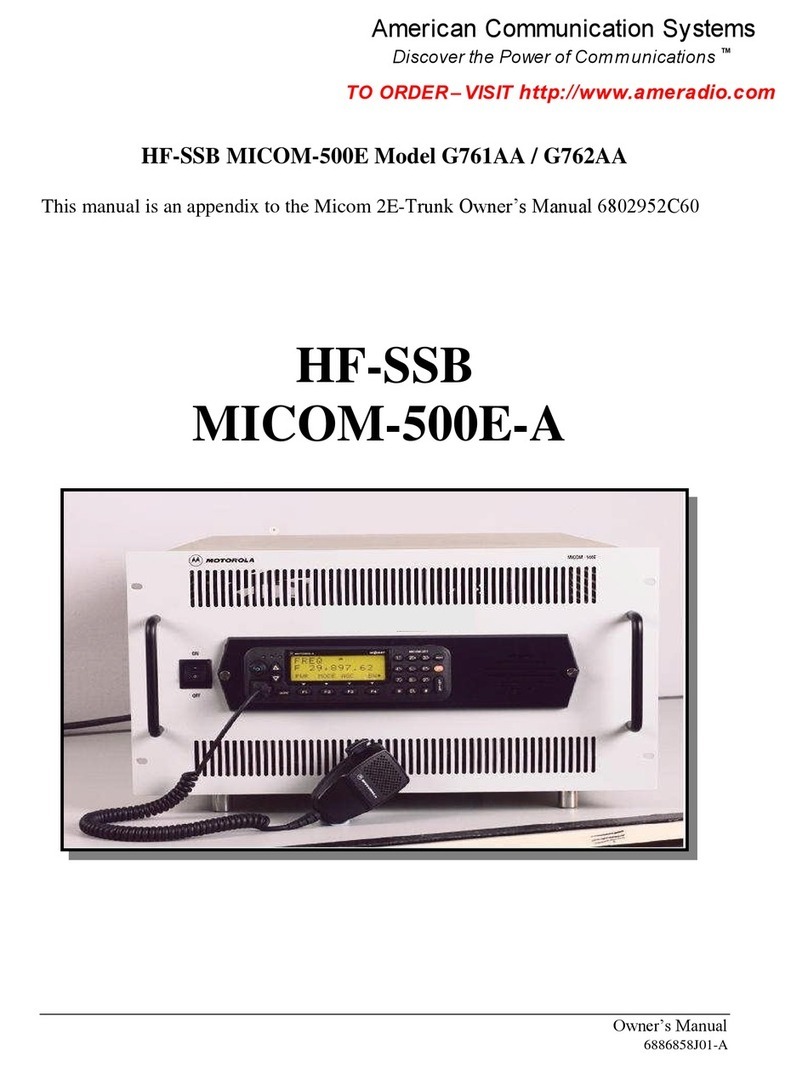
Motorola
Motorola HF-SSB MICOM-500E-A G761AA User manual
Popular Transceiver manuals by other brands

Kenwood
Kenwood ProTalk TK-3201 instruction manual

City Theatrical
City Theatrical SHoW DMX SHoW Baby user manual

Standart Horizont
Standart Horizont HX407 owner's manual

B&G
B&G V90S quick start guide

VictelGlobal
VictelGlobal ALK300 series Operation manual

Cactus
Cactus Wireless Flash Transceiver V6 user manual
